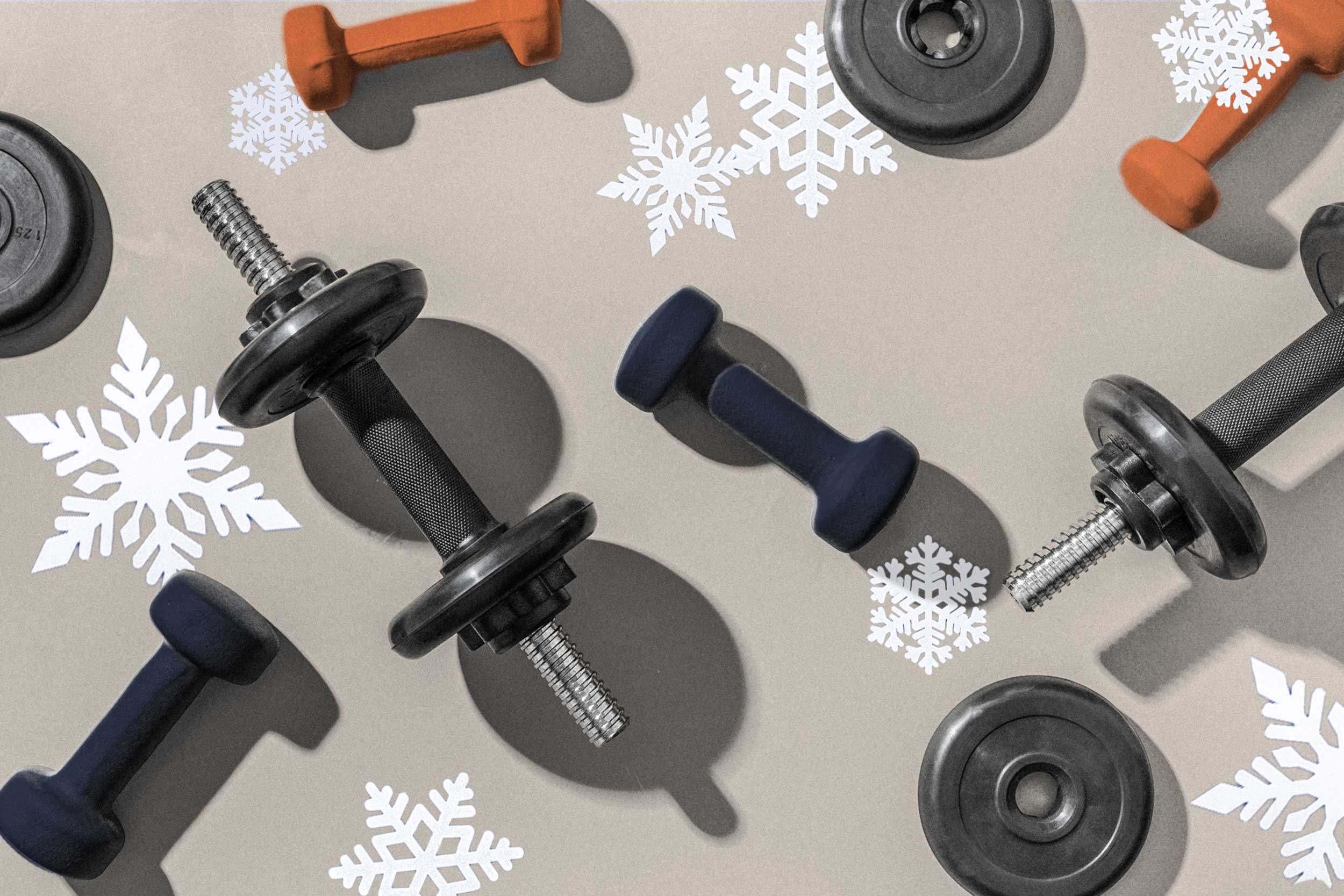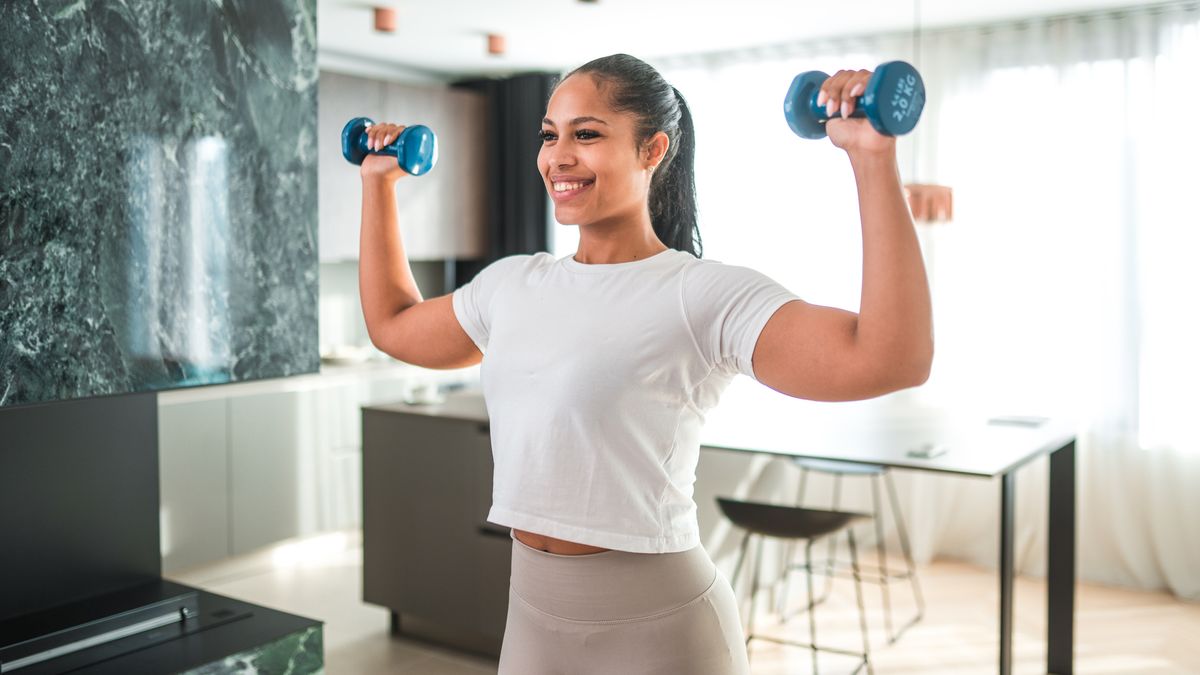In this hyperactive world of non-stop schedules and endless notifications, busy people often exercise to regulate stress. A solid sweat session can leave you feeling more energised and even happier after your body produces endorphins from all that movement – but that’s not always the best course of action. An intense workout can also crank up cortisol, your body’s stress hormone. If your stress levels are already through the roof, what your body might actually need is something slower and easier, whether you want to admit it or not.
Somatic workouts – a style of slow, mindful, body-focused exercise – have gained popularity as a remedy to society’s collective elevated stress state. This type of training can help you dial things down, relax, and reconnect to your body. Here’s what you need to know and how to work more somatic training into your routine.
What Are Somatic Workouts?
Instead of chasing PRs or burning out in a HIIT workout, somatic exercise is about tuning in toward yourself. ‘It’s prioritising movement that feels good and listening to what your body’s telling you,’ says Julianne Lane, DPT, C.S.C.S., a physical therapist at Bespoke Treatments in San Diego who uses somatic movement in her practice. ‘It shouldn’t be painful, strenuous, or difficult. It’s about allowing your body and your mind to link up so that you can be more in tune with yourself.’
Mind-body practices like yoga and tai-chi are obvious examples, but somatic exercises don’t always look like exercise. Anything that syncs your movements with internal awareness can count – like stretching, walking, and even breathwork. ‘You’re not really going into that exercise with a strength-gain or competitive goal; it’s more about the mindfulness,’ says Lane. During this movement, you’re focusing on how it feels in your body rather than what it looks like.
Who Are Somatic Workouts Good For?
Somatic workouts can benefit anyone stuck in a chronic state of stress. While traditional exercise activates your sympathetic nervous system (the network behind the of nerves behind the fight-or-flight response), somatic workouts have a different effect: they turn on your parasympathetic nervous system, the rest and digest system. ‘It helps your body actually relax,’ says Lane. Your heart rate lowers, you feel calmer, and your muscles can release tension.
‘Let’s say you have a very stressful job,’ says Lane. ‘If you wake up first thing in the morning and go to an intense workout class – or late at night – that’s stressful on your body. You’re keeping cortisol levels pretty high throughout the day.’ Somatic workouts can help by giving your nervous system a chance to recover before or after those high-intensity sessions. They’re also beneficial for people struggle to sleep, like those with sleep disorders or anyone who has a hard time winding down at night. And sleep is when recovery – and real strength gains – actually happen.
Somatic movement can also be an effective tool for managing chronic pain, like lower back pain. ‘By doing somatic movement, it allows patients to shift their focus away from the pain site to other parts of the body,’ says Lane. Over time, small studies have shown this can actually lower pain perception.
How to Add Somatic Exercises to Your Workout Routine
You don’t need to overhaul your workouts to try somatic movement. Just sprinkle these training approaches into your routine to expand your exercise horizons and connect better to your body. Start with a few minutes of somatic movement to your warm-up, cool-down, or recovery days. Here are a few simple practices to get you started:
1/ Body Scan
This exercise is all about body awareness. Start at the top of your body and move down to your toes, paying attention to how each part feels. ‘Start with gentle movements of the head and neck, and get hose muscles to really relax,’ says Lane. ‘Then you move down to the shoulders (little shoulder roll), and then to the hands (little wiggles). Then lay the hands still, and really work down the body that way.’
2/ Diaphragmatic Breathing
‘A lot of times we breathe with our accessory muscles like our upper traps, our neck muscles, or our chest muscles, rather than using our diaphragm throughout the day,’ says Lane. Instead, inhale deeply through your nose, letting your belly expand first, then your rib cage. Exhale slowly.
Bonus points: Pair this breathwork with deep stretches to make it a full somatic workout.
3/ Dance
Turn on your favorite song and move however your body feels like moving. Let your intuition guide you – there’s no wrong way.
4/ Yoga
Some fast-paced studio classes may miss the mark, but many yoga practices are inherently somatic when they focus on connecting breath and movement.
Just like any new habit, somatic exercise takes practice, and quieting your inner dialogue and focusing on feeling is easier said than done.
So start slow: ‘Try three days a week and then once that feels manageable, you can increase up to four or five times a week,’ says Lane. As you build consistency, you may notice yourself feeling calmer, more grounded, and better able to handle whatever life throws your way.
More Low-Intensity Training
























/cdn.vox-cdn.com/uploads/chorus_asset/file/24982514/Quest_3_dock.jpg)





